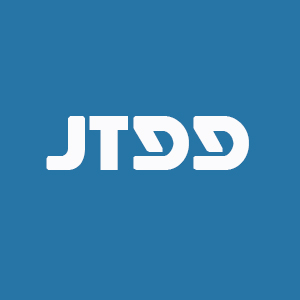REFERENCES
1. Genovese A, Butler MG. The autism spectrum: behavioral, psychiatric and genetic associations. Genes 2023;14:677.
2. Singh R, Kisku A, Kungumaraj H, et al. Autism spectrum disorders: a recent update on targeting inflammatory pathways with natural anti-inflammatory agents. Biomedicines 2023;11:115.
3. Massrali A, Adhya D, Srivastava DP, Baron-Cohen S, Kotter MR. Virus-induced maternal immune activation as an environmental factor in the etiology of autism and schizophrenia. Front Neurosci 2022;16:834058.
4. Zawadzka A, Cieślik M, Adamczyk A. The role of maternal immune activation in the pathogenesis of autism: a review of the evidence, proposed mechanisms and implications for treatment. Int J Mol Sci 2021;22:11516.
5. Frye RE, Cakir J, Rose S, et al. Mitochondria may mediate prenatal environmental influences in autism spectrum disorder. J Pers Med 2021;11:218.
6. Bucknor MC, Gururajan A, Dale RC, Hofer MJ. A comprehensive approach to modeling maternal immune activation in rodents. Front Neurosci 2022;16:1071976.
7. Bekkering S, Domínguez-Andrés J, Joosten LAB, Riksen NP, Netea MG. Trained immunity: reprogramming innate immunity in health and disease. Annu Rev Immunol 2021;39:667-93.
8. Tercan H, Riksen NP, Joosten LAB, Netea MG, Bekkering S. Trained immunity: long-term adaptation in innate immune responses. Arterioscler Thromb Vasc Biol 2021;41:55-61.
9. Tangye SG, Al-Herz W, Bousfiha A, et al. Human inborn errors of immunity: 2022 update on the classification from the international union of immunological societies expert committee. J Clin Immunol 2022;42:1473-507.
10. Wilson DI, Burn J, Scambler P, Goodship J. DiGeorge syndrome: part of CATCH 22. J Med Genet 1993;30:852-6.
11. Mustillo PJ, Sullivan KE, Chinn IK, et al. Clinical practice guidelines for the immunological management of chromosome 22q11.2 deletion syndrome and other defects in thymic development. J Clin Immunol 2023;43:247-70.
12. Szczawinska-Poplonyk A, Schwartzmann E, Chmara Z, et al. Chromosome 22q11.2 deletion syndrome: a comprehensive review of molecular genetics in the context of multidisciplinary clinical approach. Int J Mol Sci 2023;24:8317.
13. Marcovecchio GE, Bortolomai I, Ferrua F, et al. Thymic epithelium abnormalities in DiGeorge and down syndrome patients Contribute to dysregulation in T cell development. Front Immunol 2019;10:447.
14. Menghi M, Micangeli G, Tarani F, et al. Neuroinflammation and oxidative stress in individuals affected by digeorge syndrome. Int J Mol Sci 2023;24:4242.
15. Fiksinski AM, Schneider M, Zinkstok J, Baribeau D, Chawner SJRA, Vorstman JAS. Neurodevelopmental trajectories and psychiatric morbidity: lessons learned from the 22q11.2 deletion syndrome. Curr Psychiatry Rep 2021;23:13.
16. Gothelf D, Law AJ, Frisch A, et al. Biological effects of COMT haplotypes and psychosis risk in 22q11.2 deletion syndrome. Biol Psychiatry 2014;75:406-13.
17. Radoeva PD, Coman IL, Salazar CA, et al. Association between autism spectrum disorder in individuals with velocardiofacial (22q11.2 deletion) syndrome and PRODH and COMT genotypes. Psychiatr Genet 2014;24:269-72.
18. Basson MA, van Ravenswaaij-Arts C. Functional insights into chromatin remodelling from studies on CHARGE syndrome. Trends Genet 2015;31:600-11.
19. Dijk DR, Bocca G, van Ravenswaaij-Arts CM. Growth in CHARGE syndrome: optimizing care with a multidisciplinary approach. J Multidiscip Healthc 2019;12:607-20.
20. Blake KD, Hudson AS. Gastrointestinal and feeding difficulties in CHARGE syndrome: a review from head-to-toe. Am J Med Genet C Semin Med Genet 2017;175:496-506.
21. Thomas AT, Waite J, Williams CA, Kirk J, Oliver C, Richards C. Phenotypic characteristics and variability in CHARGE syndrome: a PRISMA compliant systematic review and meta-analysis. J Neurodev Disord 2022;14:49.
22. Zhang R, He H, Yuan B, et al. An intronic variant of CHD7 identified in autism patients interferes with neuronal differentiation and development. Neurosci Bull 2021;37:1091-106.
23. Collins C, Sharpe E, Silber A, Kulke S, Hsieh EWY. Congenital athymia: genetic etiologies, clinical manifestations, diagnosis, and treatment. J Clin Immunol 2021;41:881-95.
24. Mai CT, Isenburg JL, Canfield MA, et al. National Birth Defects Prevention Network. National population-based estimates for major birth defects, 2010-2014. Birth Defects Res 2019;111:1420-35.
25. Jenner L, Richards C, Howard R, Moss J. Heterogeneity of autism characteristics in genetic syndromes: key considerations for assessment and support. Curr Dev Disord Rep 2023;10:132-46.
26. Micangeli G, Menghi M, Profeta G, et al. The impact of oxidative stress on pediatrics syndromes. Antioxidants 2022;11:1983.
27. Marcovecchio GE, Ferrua F, Fontana E, et al. Premature senescence and increased oxidative stress in the thymus of down syndrome patients. Front Immunol 2021;12:669893.
28. Janoff EN, Tseng HF, Nguyen JL, et al. Incidence and clinical outcomes of pneumonia in persons with down syndrome in the United States. Vaccine 2023;41:4571-8.
29. Peeters D, Pico-Knijnenburg I, Wieringa D, et al. AKT hyperphosphorylation and T cell exhaustion in down syndrome. Front Immunol 2022;13:724436.
30. Edmister S, Ibrahim R, Kakodkar R, Kreiling JA, Creton R. A zebrafish model for calcineurin-dependent brain function. Behav Brain Res 2022;416:113544.
31. Li Y, Bögershausen N, Alanay Y, et al. A mutation screen in patients with kabuki syndrome. Hum Genet 2011;130:715-24.
32. Boniel S, Szymańska K, Śmigiel R, Szczałuba K. kabuki syndrome-clinical review with molecular aspects. Genes 2021;12:468.
33. Barry KK, Tsaparlis M, Hoffman D, et al. From genotype to phenotype-a review of kabuki syndrome. Genes 2022;13:1761.
34. Kurahashi N, Miyake N, Mizuno S, et al. Characteristics of epilepsy in patients with kabuki syndrome with KMT2D mutations. Brain Dev 2017;39:672-7.
35. Orange JS, Ballow M, Stiehm ER, et al. Use and interpretation of diagnostic vaccination in primary immunodeficiency: a working group report of the basic and clinical immunology interest section of the American academy of allergy, asthma & immunology. J Allergy Clin Immunol 2012;130:S1-24.
36. McCusker C, Upton J, Warrington R. Primary immunodeficiency. Allergy Asthma Clin Immunol 2018;14:61.
37. Paris K, Wall LA. The Treatment of primary immune deficiencies: lessons learned and future opportunities. Clin Rev Allergy Immunol 2023;65:19-30.
38. Zengeler KE, Lukens JR. Innate immunity at the crossroads of healthy brain maturation and neurodevelopmental disorders. Nat Rev Immunol 2021;21:454-68.
39. International FMF Consortium. Ancient missense mutations in a new member of the RoRet gene family are likely to cause familial Mediterranean fever. Cell 1997;90:797-807.
40. Ben-Chetrit E, Touitou I. Familial mediterranean fever in the world. Arthritis Rheum 2009;61:1447-53.
41. Georgin-Lavialle S, Ducharme-Benard S, Sarrabay G, Savey L, Grateau G, Hentgen V. Systemic autoinflammatory diseases: clinical state of the art. Best Pract Res Clin Rheumatol 2020;34:101529.
42. Maggio MC, Corsello G. FMF is not always “fever”: from clinical presentation to “treat to target”. Ital J Pediatr 2020;46:7.
43. Migita K, Fujita Y, Asano T, Sato S. The expanding spectrum of autoinflammatory diseases. Intern Med 2023;62:43-50.
44. Vanzo RJ, Prasad A, Staunch L, et al. The temple grandin genome: comprehensive analysis in a scientist with high-functioning autism. J Pers Med 2020;11:21.
45. Alehashemi S, Goldbach-Mansky R. Human autoinflammatory diseases mediated by NLRP3-, Pyrin-, NLRP1-, and NLRC4-inflammasome dysregulation updates on diagnosis, treatment, and the respective roles of IL-1 and IL-18. Front Immunol 2020;11:1840.
46. Masters SL, Lagou V, Jéru I, et al. Familial autoinflammation with neutrophilic dermatosis reveals a regulatory mechanism of pyrin activation. Sci Transl Med 2016;8:332ra45.
47. Missoum H, Adadi N, Alami M, et al. Correlation genotype-phenotype: MEFV gene mutations and Moroccan patients with rheumatoid arthritis. Pan Afr Med J 2022;41:121.
49. Cuisset L, Jeru I, Dumont B, et al. French CAPS study group. Mutations in the autoinflammatory cryopyrin-associated periodic syndrome gene: epidemiological study and lessons from eight years of genetic analysis in France. Ann Rheum Dis 2011;70:495-9.
50. Mulazzani E, Wagner D, Havla J, et al. Neurological phenotypes in patients with NLRP3-, MEFV-, and TNFRSF1A low-penetrance variants. J Neuroinflammation 2020;17:196.
51. Reyes AZ, Hu KA, Teperman J, et al. Anti-inflammatory therapy for COVID-19 infection: the case for colchicine. Ann Rheum Dis 2021;80:550-7.
52. Potere N, Del Buono MG, Caricchio R, et al. Interleukin-1 and the NLRP3 inflammasome in COVID-19: pathogenetic and therapeutic implications. EBioMedicine 2022;85:104299.
53. Martínez GJ, Celermajer DS, Patel S. The NLRP3 inflammasome and the emerging role of colchicine to inhibit atherosclerosis-associated inflammation. Atherosclerosis 2018;269:262-71.
54. Slobodnick A, Shah B, Krasnokutsky S, Pillinger MH. Update on colchicine, 2017. Rheumatology 2018;57:i4-11.
55. Shah B, Allen N, Harchandani B, et al. Effect of colchicine on platelet-platelet and platelet-leukocyte interactions: a pilot study in healthy subjects. Inflammation 2016;39:182-9.
56. Dubois EA, Rissmann R, Cohen AF. Rilonacept and canakinumab. Br J Clin Pharmacol 2011;71:639-41.
57. Baskar S, Klein AL, Zeft A. The use of IL-1 receptor antagonist (anakinra) in idiopathic recurrent pericarditis: a narrative review. Cardiol Res Pract 2016;2016:7840724.
58. Jyonouchi H, Geng L. Resolution of EEG findings and clinical improvement in a patient with encephalopathy and ESES with a combination of immunomodulating agents other than corticosteroids: a case report. Epilepsy Behav Rep 2020;14:100379.
59. Kyriazopoulou E, Huet T, Cavalli G, et al. International Collaborative Group for Anakinra in COVID-19. Effect of anakinra on mortality in patients with COVID-19: a systematic review and patient-level meta-analysis. Lancet Rheumatol 2021;3:e690-7.
60. Kyriazopoulou E, Poulakou G, Milionis H, et al. Early treatment of COVID-19 with anakinra guided by soluble urokinase plasminogen receptor plasma levels: a double-blind, randomized controlled phase 3 trial. Nat Med 2021;27:1752-60.
61. Dahms K, Mikolajewska A, Ansems K, Metzendorf MI, Benstoem C, Stegemann M. Anakinra for the treatment of COVID-19 patients: a systematic review and meta-analysis. Eur J Med Res 2023;28:100.
62. Siebeler R, de Winther MPJ, Hoeksema MA. The regulatory landscape of macrophage interferon signaling in inflammation. J Allergy Clin Immunol 2023;152:326-37.
63. Bastard P, Gervais A, Le Voyer T, et al. Autoantibodies neutralizing type I IFNs are present in ~4% of uninfected individuals over 70 years old and account for ~20% of COVID-19 deaths. Sci Immunol 2021;6:62.
64. Crow YJ, Stetson DB. The type I interferonopathies: 10 years on. Nat Rev Immunol 2022;22:471-83.
65. Manna R, Rigante D. The everchanging framework of autoinflammation. Intern Emerg Med 2021;16:1759-70.
66. d'Angelo DM, Di Filippo P, Breda L, Chiarelli F. Type I interferonopathies in children: an overview. Front Pediatr 2021;9:631329.
67. Viengkhou B, Hofer MJ. Breaking down the cellular responses to type I interferon neurotoxicity in the brain. Front Immunol 2023;14:1110593.
68. Haşlak F, Kılıç Könte E, Aslan E, Şahin S, Kasapçopur Ö. Type I interferonopathies in childhood. Balkan Med J 2023;40:165-74.
69. Volpi S, Picco P, Caorsi R, Candotti F, Gattorno M. Type I interferonopathies in pediatric rheumatology. Pediatr Rheumatol Online J 2016;14:35.
70. Jain NK, Tailang M, Jain HK, et al. Therapeutic implications of current Janus kinase inhibitors as anti-COVID agents: a review. Front Pharmacol 2023;14:1135145.
71. Mortezavi M, Martin DA, Schulze-Koops H. After 25 years of drug development, do we know JAK? RMD Open 2022;8:e002409.
72. Mella P, Schumacher RF, Cranston T, de Saint Basile G, Savoldi G, Notarangelo LD. Eleven novel JAK3 mutations in patients with severe combined immunodeficiency-including the first patients with mutations in the kinase domain. Hum Mutat 2001;18:355-6.
73. Xin P, Xu X, Deng C, et al. The role of JAK/STAT signaling pathway and its inhibitors in diseases. Int Immunopharmacol 2020;80:106210.
74. Sanchez GAM, Reinhardt A, Ramsey S, et al. JAK1/2 inhibition with baricitinib in the treatment of autoinflammatory interferonopathies. J Clin Invest 2018;128:3041-52.
75. Li W, Wang W, Wang W, et al. Janus kinase inhibitors in the treatment of type I interferonopathies: a case series from a single center in China. Front Immunol 2022;13:825367.
76. Kanazawa N, Ishii T, Takita Y, Nishikawa A, Nishikomori R. Efficacy and safety of baricitinib in Japanese patients with autoinflammatory type I interferonopathies (NNS/CANDLE, SAVI, And AGS). Pediatr Rheumatol Online J 2023;21:38.
77. Lindahl H, Bryceson YT. Neuroinflammation associated with inborn errors of immunity. Front Immunol 2021;12:827815.
78. Lin B, Goldbach-Mansky R. Pathogenic insights from genetic causes of autoinflammatory inflammasomopathies and interferonopathies. J Allergy Clin Immunol 2022;149:819-32.
79. Yuan Y, Jiao B, Qu L, Yang D, Liu R. The development of COVID-19 treatment. Front Immunol 2023;14:1125246.
80. Luo C, Ye WR, Shi W, et al. Perfect match: mTOR inhibitors and tuberous sclerosis complex. Orphanet J Rare Dis 2022;17:106.
81. Thouenon R, Moreno-Corona N, Poggi L, Durandy A, Kracker S. Activated PI3Kinase delta syndrome-a multifaceted disease. Front Pediatr 2021;9:652405.
82. Elkaim E, Neven B, Bruneau J, et al. Clinical and immunologic phenotype associated with activated phosphoinositide 3-kinase δ syndrome 2: a cohort study. J Allergy Clin Immunol 2016;138:210-8.e9.
83. Coulter TI, Chandra A, Bacon CM, et al. Clinical spectrum and features of activated phosphoinositide 3-kinase δ syndrome: a large patient cohort study. J Allergy Clin Immunol 2017;139:597-606.e4.
84. Okkenhaug K. Signaling by the phosphoinositide 3-kinase family in immune cells. Annu Rev Immunol 2013;31:675-704.
85. Redenbaugh V, Coulter T. Disorders related to PI3Kδ hyperactivation: characterizing the clinical and immunological features of activated PI3-kinase delta syndromes. Front Pediatr 2021;9:702872.
86. Tessarin G, Rossi S, Baronio M, et al. Activated phosphoinositide 3-kinase delta syndrome 1: clinical and immunological data from an Italian cohort of patients. J Clin Med 2020;9:3335.
87. Cohen JI. Herpesviruses in the Activated phosphatidylinositol-3-kinase-δ syndrome. Front Immunol 2018;9:237.
88. Maccari ME, Abolhassani H, Aghamohammadi A, et al. Disease evolution and response to rapamycin in activated phosphoinositide 3-kinase δ syndrome: the European society for immunodeficiencies-activated phosphoinositide 3-kinase δ syndrome registry. Front Immunol 2018;9:543.
89. Jamee M, Moniri S, Zaki-Dizaji M, et al. Clinical, immunological, and genetic features in patients with activated pi3kδ syndrome (APDS): a systematic review. Clin Rev Allergy Immunol 2020;59:323-33.
90. Moreno-Corona N, Chentout L, Poggi L, et al. Two monogenetic disorders, activated PI3-kinase-δ syndrome 2 and smith-magenis syndrome, in one patient: case report and a literature review of neurodevelopmental impact in primary immunodeficiencies associated with disturbed PI3K signaling. Front Pediatr 2021;9:688022.
91. Kang JM, Kim SK, Kim D, et al. Successful sirolimus treatment for korean patients with activated phosphoinositide 3-kinase δ syndrome 1: the first case series in Korea. Yonsei Med J 2020;61:542-6.
92. Rao VK, Webster S, Dalm VASH, et al. Effective “activated PI3Kδ syndrome”-targeted therapy with the PI3Kδ inhibitor leniolisib. Blood 2017;130:2307-16.
93. Diaz N, Juarez M, Cancrini C, et al. Seletalisib for activated PI3Kδ syndromes: open-label phase 1b and extension studies. J Immunol 2020;205:2979-87.
94. Rademacher S, Eickholt BJ. PTEN in autism and neurodevelopmental disorders. Cold Spring Harb Perspect Med 2019;9:a036780.
95. Spinelli L, Black FM, Berg JN, Eickholt BJ, Leslie NR. Functionally distinct groups of inherited PTEN mutations in autism and tumour syndromes. J Med Genet 2015;52:128-34.
96. Plamper M, Gohlke B, Woelfle J. PTEN hamartoma tumor syndrome in childhood and adolescence-a comprehensive review and presentation of the German pediatric guideline. Mol Cell Pediatr 2022;9:3.
97. Le Belle JE, Sperry J, Ngo A, et al. Maternal inflammation contributes to brain overgrowth and autism-associated behaviors through altered redox signaling in stem and progenitor cells. Stem Cell Reports 2014;3:725-34.
98. DeSpenza T Jr, Carlson M, Panchagnula S, et al. PTEN mutations in autism spectrum disorder and congenital hydrocephalus: developmental pleiotropy and therapeutic targets. Trends Neurosci 2021;44:961-76.
99. Yehia L, Ngeow J, Eng C. PTEN-opathies: from biological insights to evidence-based precision medicine. J Clin Invest 2019;129:452-64.
100. Srivastava S, Jo B, Zhang B, et al. Developmental Synaptopathies Consortium. A randomized controlled trial of everolimus for neurocognitive symptoms in PTEN hamartoma tumor syndrome. Hum Mol Genet 2022;31:3393-404.
101. Vitale A, Caggiano V, Bimonte A, et al. VEXAS syndrome: a new paradigm for adult-onset monogenic autoinflammatory diseases. Intern Emerg Med 2023;18:711-22.
102. Georgin-Lavialle S, Terrier B, Guedon AF, et al. Further characterization of clinical and laboratory features in VEXAS syndrome: large-scale analysis of a multicentre case series of 116 French patients. Br J Dermatol 2022;186:564-74.
103. Stanova AK, Ryabkova VA, Utekhin SV, Shoenfeld VJ, Churilov LP, Shoenfeld Y. Anti-idiotypic agonistic antibodies: candidates for the role of universal remedy. Antibodies 2020;9:19.
104. Bunte K, Beikler T. Th17 cells and the IL-23/IL-17 axis in the pathogenesis of periodontitis and immune-mediated inflammatory diseases. Int J Mol Sci 2019;20:3394.
105. Ku CL, Chi CY, von Bernuth H, Doffinger R. Autoantibodies against cytokines: phenocopies of primary immunodeficiencies? Hum Genet 2020;139:783-94.









